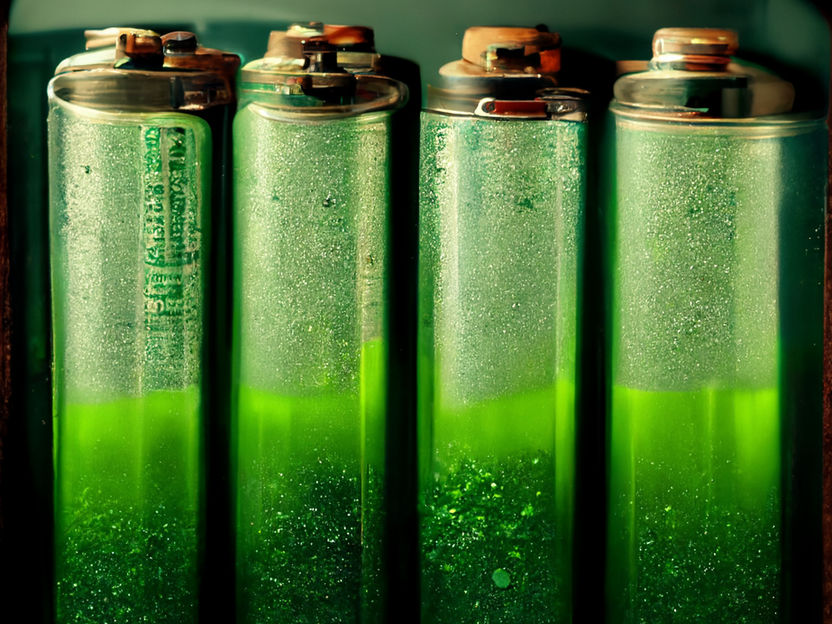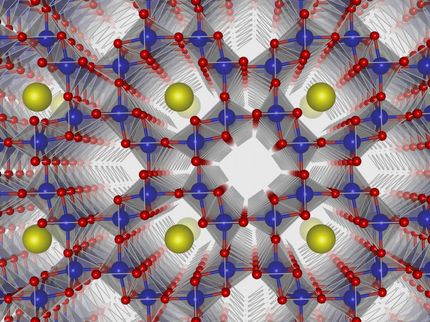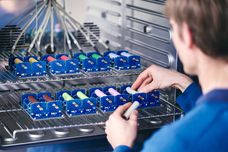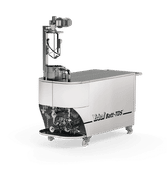Lithium from electric vehicle batteries: Moving towards better recycling
Evonik aims to make the recycling of lithium simpler, more cost-effective, and more environmentally friendly
Advertisement
Evonik aims to make the recycling of lithium simpler, more cost-effective, and more environmentally friendly. This metal is essential for the batteries used to drive millions of electric vehicles. At present, however, up to 95 percent is not recycled after use. Evonik’s researchers have therefore adopted a new approach, focusing highly efficient recycling of lithium using an electrochemical process with a ceramic membrane. The technology is currently being tested on a pilot scale. It is highly efficient and generates high-purity lithium hydroxide that is suitable for the manufacture of new batteries. Following proof of concept in the lab, the technology now needs to be driven forward—and Evonik is working on that at its sites in Hanau and Marl in Germany. Its specialists are confident that the ceramic membrane process will be market-ready in three to five years.

Symbolic image
Computer generated picture
Elisabeth Gorman, lithium recycling expert at Evonik, expects this to coincide with an important milestone: “In a few years, many lithium-ion batteries will be coming to the end of their service life. As a result, there will be a sharp rise in the volume of spent batteries that can be used to recycle lithium. Moreover, new production facilities are being set up in Europe for large-scale production of batteries for electric vehicles. That will generate production waste containing lithium. A third factor is legislation: The EU, in particular, is pressing for valuable raw materials to be re-used in the production cycle. That is already realistic for cobalt and nickel, but the recycling rate for lithium is less than 5 percent at present.”
Gorman is responsible for market development of lithium recycling at Creavis, Evonik's strategic innovation unit and business incubator, and is familiar with the legal situation: In the EU, it is stipulated that in four years’ time at least 35 percent of the lithium from spent batteries will have to be recovered. From 2030, the percentage has to be increased to 70 percent. China and the USA also have government regulations on the recovery of lithium.
The processes currently used to recover metals from spent batteries are based on smelting (pyrometallurgical process), leaching (hydrometallurgical process), or a combination of the two. These processes have proven effective for the recovery of cobalt and nickel. Conventional reprocessing of lithium is also based on hydrometallurgic processes. However, the processes are cost-intensive, require large quantities of energy and water, and involve many interim steps and additional chemicals. There are therefore good reasons to look for better alternatives.
Evonik has taken up this challenge. Experts at this specialty chemicals company are working on the development of a ceramic membrane with selectivity for lithium ions, which forms the heart of an electrochemical process. The aim is selective and efficient recovery of lithium salts from spent batteries—while minimizing the use of energy and chemicals. The starting point is the black mass. This is the term used by experts to refer to what remains of spent lithium-ion batteries when the plastic parts have been removed and the rest has been ground to powder. The black mass contains a mixture of lithium, cobalt, nickel, and manganese. Processing of this black mass results in lithium leachate.
Evonik’s research team processes this leachate electrochemically with the aid of a ceramic membrane with selectivity for lithium ions. Selectivity means that the membrane only allows positively charged lithium cations to pass from the side with the leachate and the positively charged anode to the other side, where there is a negatively charged cathode. Here, the lithium ions are combined with hydroxide to form battery-grade lithium hydroxide with almost 100 percent purity.
Demand for lithium is set to rise as a result of the ongoing shift from combustion engines to electric vehicles. Experts predict that in the long term recycling will contribute around 25 percent of the lithium salts required. At the same time, this could limit damage to the landscape and greatly reduce dependency on suppliers. Elisabeth Gorman is confident that in a few years Evonik’s newly developed membrane will facilitate efficient recycling of lithium—and be recognized for its sustainability.
Other news from the department science
These products might interest you
Most read news
More news from our other portals
See the theme worlds for related content
Topic World Battery Technology
The topic world Battery Technology combines relevant knowledge in a unique way. Here you will find everything about suppliers and their products, webinars, white papers, catalogs and brochures.

Topic World Battery Technology
The topic world Battery Technology combines relevant knowledge in a unique way. Here you will find everything about suppliers and their products, webinars, white papers, catalogs and brochures.
































































